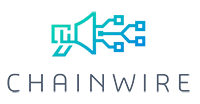“The blockchain trilemma” is the term used to summarize the difficult decisions faced by early blockchain developers when it came to choosing the right balance of security, scalability, and decentralization. However, many newer platforms have all but solved the issue. With blockchain networks able to process thousands of transactions per second via hundreds of nodes, the traditional blockchain trilemma has given way to an even better known and longer-established three-way trade-off: good, fast, and cheap.
The fundamental premise is that you can only have two of the three. However, users have too often found themselves compromising on more than one of these factors when it comes to legacy blockchains. As the price of ETH soared to all-time highs over April and May, Ethereum’s average fees skyrocketed to around $70.
Usually, the average consumer doesn’t mind paying for a premium product. There’s a reason that Apple sells so many iPhones even though they’re the most expensive on the market. However, in the case of Ethereum users, they’re being asked to wait until the platform is upgraded before they can use the premium version – Ethereum 2.0, which comes with the promise of lower fees and higher throughput. The upcoming London hard fork in July will implement a new transaction fee model, but the move is still drawing criticism from some corners. It seems that despite a reasonably sweeping change for Ethereum miners, the net impact on transaction fees for users will be fairly negligible.
On a macro level, it’s hard to argue with critics. A world computer driving a democratic system of open finance hardly seems possible when it costs $70 to send a transaction.
Furthermore, this comes at a time when there are now plenty of alternative platforms on the market. In particular, many layer 2 projects that have been in development for several years are now delivering mainnets that can fulfill the holy trinity of good, fast, and cheap. Even better, they can do so in a way that preserves interoperability with the Ethereum ecosystem of dApps and tokens.
Polygon Gaining Adoption
Polygon (previously Matic Network) has been rightly grabbing headlines lately, thanks to a booming token price and adoption by DeFi heavyweights, including Aave and 1inch.
Aave attracted over $12 billion in deposits to its Polygon version in the first weeks post-launch, while 1inch facilitated $43 million in swaps – using only $25 worth of gas. Recently, billionaire Mark Cuban confirmed he had invested in Polygon, although he didn’t reveal how much.
Along with the migrating apps, Polygon has also been nurturing an ecosystem of native DeFi applications, including QuickSwap, information market Polymarket, lending protocol EasyFi, and enterprise DeFi platform Trace Network.
Polygon started out as a layer 2 platform based on Ethereum’s Plasma side-chain scaling technology. However, as part of the recent rebranding to Polygon, the project is expanding its vision to becoming a layer 2 for other platforms and using other scaling technologies such as rollups.
Celer’s “Public Transportation System” for DeFi
Celer Network is another example of a project flying the flag for layer 2. Celer enables fast, low-cost, and secure off-chain transactions, supporting both payments and generalized off-chain smart contracts via state channels. The platform has gained over a million users thanks to integration with applications such as esport gaming.

However, more recently, Celer announced the launch of its brand-new DeFi aggregator protocol, Layer2.Finance. The platform aims to act as a layer 2 for DeFi itself, allowing users to move funds seamlessly between different applications with very low transaction costs. Layer2 Finance likens itself to a “public transport system for DeFi” – a fast, efficient, and low-cost way for users to navigate crypto’s virtual financial district.
Layer 2 effectively scales DeFi applications in place without requiring migration to a different chain. Thereby, liquidity and composability are preserved. However, the user benefits from the low costs and high throughput speeds of Layer 2, thereby resolving some of Ethereum’s most critical user experience pain points.
The platform launched in late April with a version 0.1 on mainnet. This came after a successful testnet run with nearly 2,000 participants running over 370k transactions. The first iteration supports Compound, Aave, and Curve, but the project plans to add other applications.
Ethereum’s scalability challenges haven’t come at the expense of a thriving user base. However, users have tolerated high costs for mediocre performance. Now, the availability of fast, lower-cost alternatives that blend seamlessly with the Ethereum ecosystem allows users to experience the best of all worlds.
Visit now: celer.network







